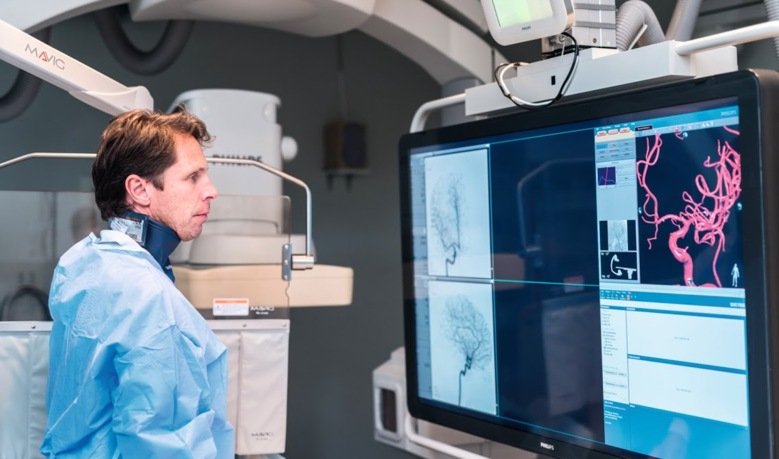Interdisciplinary teams are the key to success
Staffan Holmin has developed a microcatheter that delivers drugs and cells directly to the body’s organs via blood vessels. The next step is to take samples from organs that are hard or too risky to reach with other methods. The key to success is an interdisciplinary team with a variety of core skill sets.

The inspiration for creating an interdisciplinary team of highly talented individuals comes from Apple founder Steve Jobs, explains Holmin, professor at the Department of Clinical Neuroscience at Karolinska Institutet.
“If you’re going to succeed in creating something new, you need to work together with talented people who offer a variety of skill sets. As a doctor, I could never have built this myself, my role was to identify and describe the need, as well as discuss design together with engineers and technicians,” says Holmin.
Thinking outside of the box
The need Holmin identified was to deliver drugs with greater precision than has previously been the case, preferably directly into the tissue of any of the body’s organs. The inspiration came from a Swedish discovery made in the 1950s: the Seldinger technique. It is the technique to ensure penetration of blood vessels to bring in a thin catheter in the vascular system. But why not use this approach to access arteries or veins when a microcatheter has reached the right organ in the body?
“Making a hole through the vessel wall, inside and out, has been something you always wanted to avoid. But we said that it could be easy and safe. It’s actually quite a simple principle, but it has never been tested before,” says Holmin.
Intensive technical development followed a series of successful animal tests. Other key figures alongside Holmin were Johan Lundberg, back then a doctoral student in the research group and Stefan Jonsson, professor of Material Science at KTH.
Commercialisation support
Crucially, KI Innovations provided commercialisation support with, for example, contracts and the patent application. The rights for the Extroducer technology were sold to Smartwise Sweden AB in 2015, which in turn signed a research and commercialization agreement with AstraZeneca last year.
“Among the organs that are risky to reach with other methods you have the brain, the heart, the pancreas, the liver, kidneys and parts of the lungs. These organs are typically linked to many major diseases,” says Holmin.
A revolution in pathology
In parallel to commercialization, the research has continued – now with the goal of also using the technique for gathering samples. Thanks to developments in molecular biology in recent years, even small samples can be analysed to map which genes and proteins that are active in cells.
“We see a revolution in pathology coming, where we we’ll be able to extract small samples from organs that today are difficult or risky to reach using other methods.”
The sample gathering technique is being developed together with among others Göran Stemme, a professor at KTH, and his colleague Niclas Roxhed, both leading lights in microsystems. Again, combining the right skill sets to succeed is key.
Holmin is also participating in the development of a new X-ray detector technique under the leadership of Mats Danielsson, Head of Physics of Medical Imaging at KTH.
“We work closely with them on validation and evaluation of the method, with technical innovation supplied by KTH. So, with one project we needed help from the engineers, and in this case, they need to tap into our expertise. In both cases the scientific co-operation has been excellent,” says Holmin.
Quick facts
Medical technology set for growth
Historically, Sweden has pioneered several medical technology innovations that have had considerable impact at a global level. Together with KTH professor Mats Danielsson and Region Stockholms research director Jan Andersson, Holmin has developed the MedTechLabs initiative, an interdisciplinary centre for medical technology research at BioClinicum at Karolinska University Hospital. At the centre, Karolinska Institutet, KTH and Region Stockholm collaborate on the creation of new research services in medical technology.
